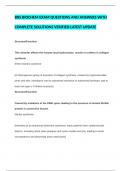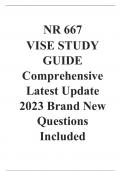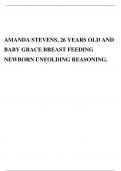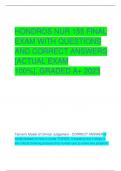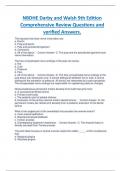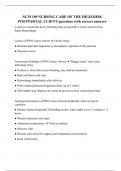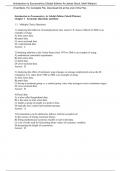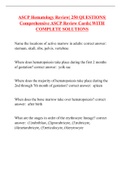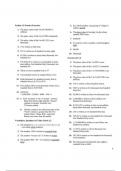Tentamen (uitwerkingen)
BRS BIOCHEM EXAM QUESTIONS AND ANSWERS WITH COMPLETE SOLUTIONS VERIFIED LATEST UPDATE
- Vak
- Instelling
BRS BIOCHEM EXAM QUESTIONS AND ANSWERS WITH COMPLETE SOLUTIONS VERIFIED LATEST UPDATE Structure/Function: This disorder affects the enzyme lysyl hydroxylase, results in a defect in collagen synthesis Ehlers-Danlos syndrome [A heterogenous group of disorders of collagen synthesis, marked b...
[Meer zien]
